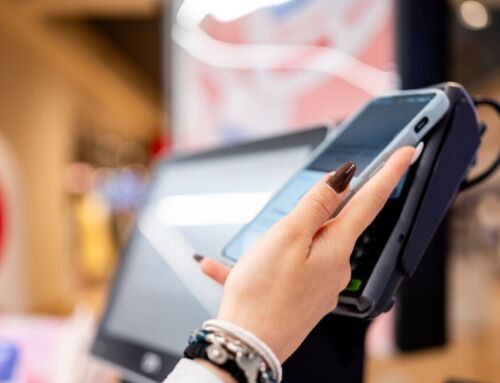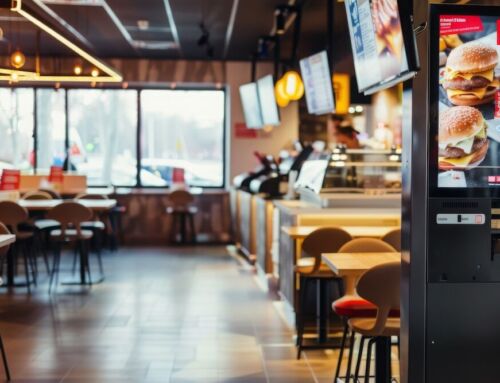Self-service kiosks in restaurants are becoming increasingly common.
Fast food giant McDonald’s recently adopted self-service ordering kiosks, and in March last year healthy fast food chain Tossed opened what is thought to be the UK’s first completely cashless restaurant.
Self-service kiosks come with plenty of advantages for restaurants – but there are also challenges in implementing the technology.
Here’s our rundown of the main benefits and challenges of self-service kiosks in restaurants.
The benefits
Kiosks can increase sales
Self-service kiosks – unlike human employees – never forget to upsell. When presented with a range of optional extras, many customers will choose to buy more than they would have otherwise.
One McDonald’s store in Florida found that customers who used their kiosks spent on average 30% more per order.
Kiosks make customers more comfortable
Self-service kiosks may also increase sales by removing social friction. A study found that when a Swedish alcohol retailer switched to self-service, the market share of items with difficult-to-pronounce names increased by 8.4%.
The researchers concluded that customers might feel embarrassed or fear being misunderstood if they mispronounce a product’s name in front of retail staff.
Self-service eliminates the need to pronounce a name, and consumers ‘may become more comfortable pursuing an otherwise mildly embarrassing or frustrating transaction’.
The same study looked at a pizza chain that introduced online ordering. They found that customers who ordered online ordered food with 3% more calories and gave 14% more special instructions.
The researchers thought this was because by removing the face-to-face transaction, online ordering removed customers’ fear of negative judgement, leaving them free to order whatever they wanted.
Kiosks reduce queues
Fast food is supposed to be just that – fast. Long queues can be a big turn-off for customers.
Self-service kiosks in restaurants can significantly cut down queues, making the ordering process much more satisfying for customers.
The challenges
You’re asking the customer to do some of the work
When restaurants introduce self-service kiosks, they’re essentially asking the customer to take on some of the work that would otherwise be done by an employee.
Customers need to be convinced that using the kiosks will result in a better experience for them – otherwise there’s no incentive to use them.
Restaurants can overcome this challenge by making their self-service kiosks as attractive and easy-to-use as possible.
The kiosk and the content displayed on it should be appealing to look at and engaging to use. It should be immediately obvious to customers what they need to do to use the kiosk, and the user interface should be simple and intuitive.
Customers are less aware of the effort being expended for them
When a customer interacts with a person during a transaction, the customer can see what’s being done for them – and this creates value for the customer.
Self-service can sometimes obscure the effort that goes into fulfilling a customer’s order, and thus may reduce this perceived value.
Restaurants can combat this by making it apparent what’s happening behind the scenes via their kiosks. For example, the kiosks could display a simple message informing the customer that their order has been sent to the kitchen and is being prepared.
Keeping the customer informed like this will help to reassure them that their order is being dealt with and their needs catered to.
Self-service kiosks in restaurants: a conclusion
Implementing self-service kiosks in restaurants isn’t without challenges – but with the right approach a self-service solution can increase sales and improve the customer experience.
If you’d like to know more about our self-service kiosk solutions, get in touch with us today – we’d love to chat.




